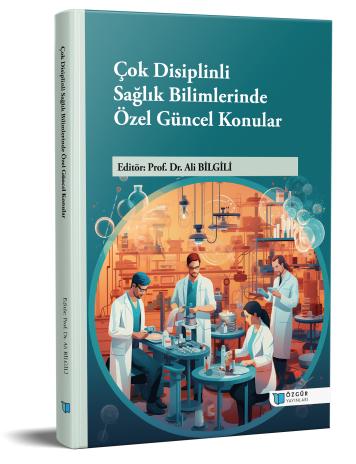
Pediatrik Radyolojide Radyasyon Güvenliği: Güncel Yaklaşımlar ve Stratejiler
Şu kitabın bölümü:
Bilgili,
A.
(ed.)
2025.
Çok Disiplinli Sağlık Bilimlerinde Özel Güncel Konular.
Özet
Pediatrik radyoloji, modern tıbbın en hassas ve kritik alanlarından biridir. Çocukluk çağında uygulanan radyolojik görüntüleme yöntemleri, hem tanı hem de tedavi planlamasında belirleyici rol oynamaktadır. Ancak bu yaş grubunda en önemli sorun, iyonizan radyasyonun biyolojik etkilerine karşı duyarlılığın yüksek olmasıdır. Çocuklar, erişkinlere göre daha hızlı hücresel proliferasyon göstermeleri, organ sistemlerinin henüz gelişim aşamasında bulunması ve daha uzun yaşam beklentisine sahip olmaları nedeniyle radyasyonun kısa ve uzun dönem etkilerine daha açıktır.
Özellikle bilgisayarlı tomografi (BT) kullanımındaki artış, pediatrik hastalarda önemli endişelere yol açmıştır. Amerika Birleşik Devletleri ve Avrupa’da her yıl milyonlarca pediatrik BT incelemesi yapılmakta olup, bunların büyük kısmı travma, akut batın ve toraks patolojileri nedeniyle uygulanmaktadır. Doz optimizasyonu erişkinlere göre düzenlenmediğinde çocuklarda kümülatif radyasyon maruziyeti, ilerleyen yaşlarda sekonder maligniteler açısından risk faktörü oluşturmaktadır.
Bu nedenle pediatrik radyolojide temel yaklaşım “As Low As Reasonably Achievable”( Mümkün Olan En Düşük Düzeyde) (ALARA) prensibidir. ALARA, tanısal doğruluğu koruyacak en düşük radyasyon dozunun kullanılması gerektiğini ifade eden, yalnızca teknik bir hedef değil aynı zamanda etik bir yükümlülüktür. Günümüzde ALARA yaklaşımına ek olarak, iterative reconstruction (inelemeli Yeniden Oluşturma) algoritmaları, spektral BT teknikleri, yapay zekâ tabanlı optimizasyon sistemleri ve kişiselleştirilmiş protokoller pediatrik görüntüleme süreçlerine entegre edilmektedir.
Modalite seçimi, çocuklarda tanısal fayda ile radyasyon riski arasındaki dengenin gözetilmesi esasına dayanmaktadır:
- Ultrasonografi (USG) ve manyetik rezonans görüntüleme (MR) iyonizan radyasyon içermemeleri nedeniyle birinci basamak yöntemlerdir.
- Bilgisayarlı tomografi (BT) yalnızca zorunlu klinik durumlarda, özellikle acil olgularda tercih edilmeli ve düşük doz protokolleriyle uygulanmalıdır.
- PET/CT ve PET/MR onkolojik ve metabolik hastalıkların değerlendirilmesinde önemli olmakla birlikte, içerdiği radyasyon yükü nedeniyle dikkatle kullanılmalıdır.
Uluslararası düzeyde çocukluk çağı radyolojisine ilişkin çeşitli girişimler bulunmaktadır. ABD’de yürütülen Image Gently Alliance ve Avrupa’daki EuroSafe Imaging programları, pediatrik görüntülemede doz azaltma stratejilerini, ebeveyn bilgilendirmesini ve sağlık profesyonellerine yönelik eğitim modüllerini ön plana çıkarmaktadır.
Radyasyonun biyolojik etkileri arasında DNA hasarı, hücresel proliferasyonda bozulmalar, büyüme ve gelişme üzerine olumsuz etkiler ve uzun vadede artmış kanser riski yer almaktadır. Bu nedenle her pediatrik inceleme, “çocuğa en az zarar verecek yöntem” ilkesi doğrultusunda planlanmalıdır.
Gelecek perspektifinde, yapay zekâ destekli otomatik protokol optimizasyonları, radyomik analizler, nanoteknolojik kontrast ajanlar ve kişiselleştirilmiş yaklaşımlar sayesinde pediatrik radyolojinin daha güvenli, etkili ve hasta dostu bir düzeye ulaşması beklenmektedir. Bu ilerlemeler, çocuk sağlığını koruma ve gelecekteki kanser risklerini azaltma açısından kritik öneme sahiptir.

